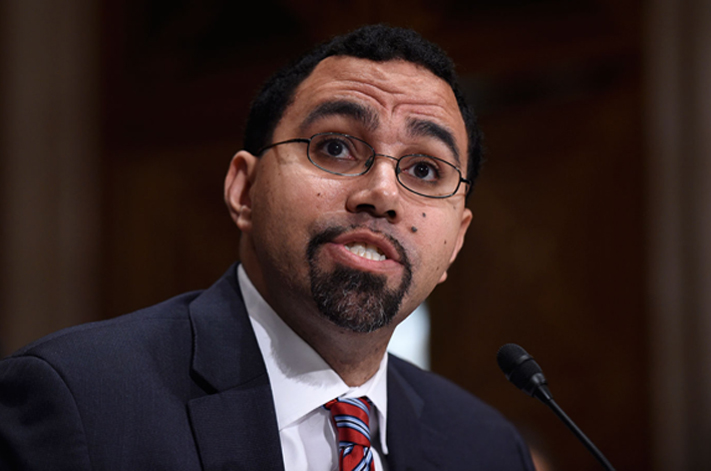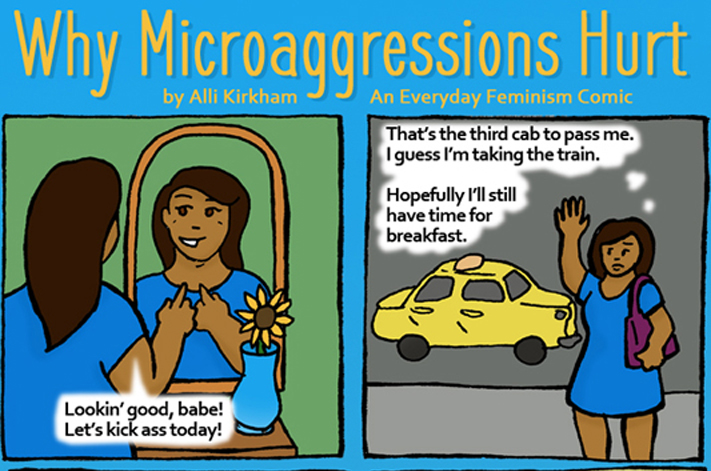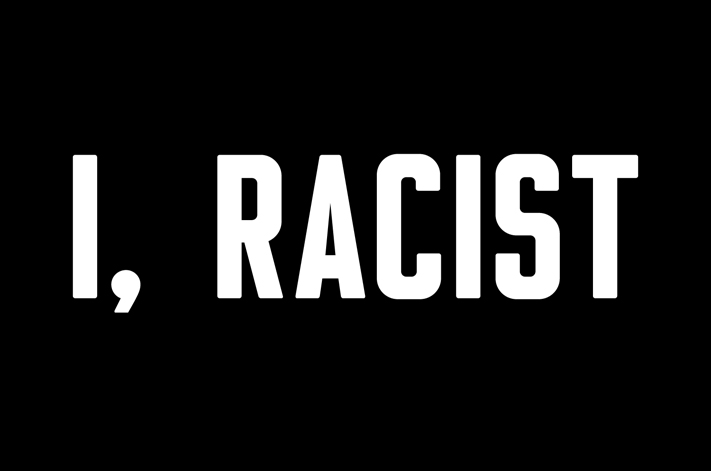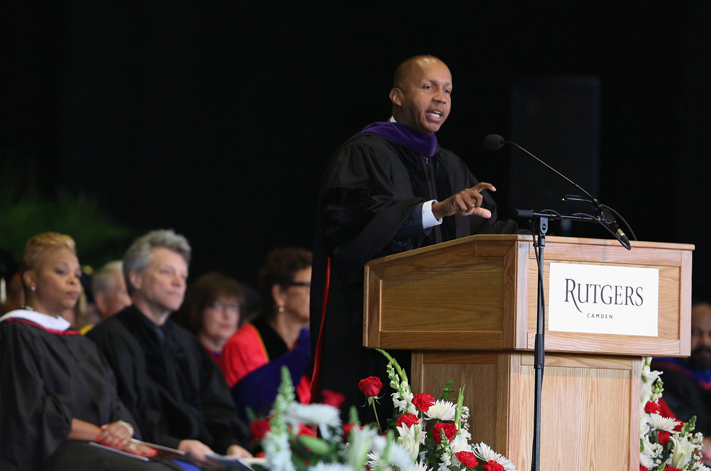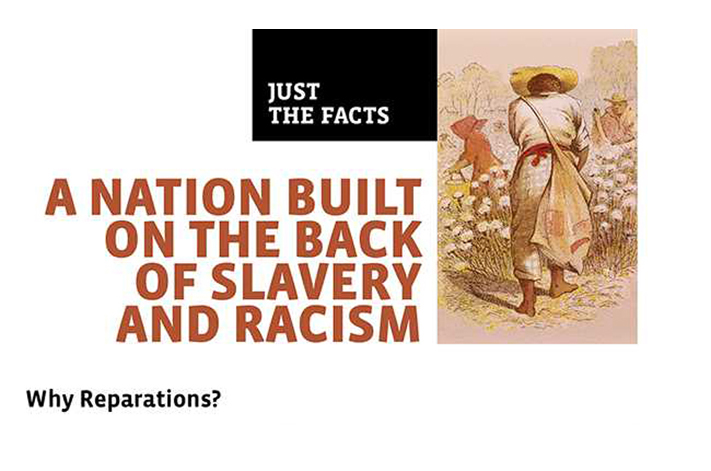Project Description
Race or Class? The Future of Affirmative Action on the College Campus
Focusing college-student recruitment on poor neighborhoods can overlook middle-class African Americans entitled to affirmative action.
In effect, these newer plans say that the way to stop discrimination on the basis of race is to pretend colorblindness but devise subterfuges to favor African Americans. One approach is to favor low-income students regardless of race. Another adopts the Supreme Court’s embrace of diversity as educationally beneficial, prompting universities to enroll disadvantaged minority students for this purpose while making no obvious attempt to remedy historic wrongs. Some persuade themselves that these are the best possible policies.
In recent years, Justice Ruth Bader Ginsburg has been one of the few leading public figures, on or off the Court, unabashedly willing to challenge Roberts’s colorblindness. In a case decided in April, she gained a new ally in Justice Sonia Sotomayor for an uncompromising defense of affirmative action.
Ginsburg has called for race-conscious policy to offset the still-enduring effects of slavery and the subsequent unconstitutional exploitation of its descendants under Jim Crow.
Of the books by African-American law professors here under review, Randall Kennedy’s For Discrimination: Race, Affirmative Action, and the Law explains why race-conscious college admissions policies are a reasonable and modest remedy for these unfortunate effects. Sheryll Cashin’s Place, Not Race is a well-argued plea for ostrich-like plans.
In contrast to this plea, Cashin’s previous book, The Failures of Integration, was an impassioned call for housing policy that would finally incorporate black families into American society. It was anything but colorblind. “Indirect approaches are no substitute for a frontal attack on what is ailing us as a nation,” she wrote, concluding that “the rest of society should stop fearing us
Now, however, writing about affirmative action in college admissions—an issue considerably less contentious than desegregation of the suburbs—Cashin has become convinced that race-conscious policy isn’t such a good idea after all. It incites resistance to black progress that she believes might not otherwise exist. Failing to speak openly and candidly on the subject of race leads Cashin to pander to white hostility: “Social psychologists link much opposition to health care expansion to high levels of racial resentment. Again, I am not saying that opponents are racist.” What else could she be saying?
Convinced that race-based affirmative action is politically dead, Cashin seeks an alternative more palatable to white opponents.
Cashin certainly has cause for concern, as elite colleges fulfill goals for black enrollment with children of well-educated African and Afro-Caribbean immigrants rather than descendants of American slaves—too many Barack Obamas and not enough Michelles. Cashin illustrates with her own family—though with origins in American slavery, it is a well-established member of a multi-generational black elite—and concludes with a letter to her six-year-old twin sons, students at a Mandarin immersion school. She tells them that her proposal will deny them undeserved privileges they can manage without: “I would trade the benefit to you of affirmative action for a country that does not fear and demonize people who look like you,” she writes, as though such a deal were on offer.
Cashin, an “integration pioneer” from childhood—she attended predominantly white schools—is now a Georgetown University professor, having graduated summa cum laude in electrical engineering from Vanderbilt, studied law at Oxford, and clerked for Thurgood Marshall at the Supreme Court. Her husband, like her, is a “professional parent of color.” Her sons’ paternal great-grandparents built a profitable corporation (it continues to this day with family leadership) and had five children, of whom four became doctors and the fifth a lawyer. On Cashin’s side, the boys’ great-grandparents went to Fisk University, as did their grandfather, who went on to medical school; their great-grandmother was a high-school principal.
It’s fair to say that giving Cashin’s sons admission advantages to elite colleges would be unjust. They don’t need it. Cashin is also right to point to a gulf between their inherited advantages and the handicaps suffered by the lowest-income African Americans living in high-poverty neighborhoods where the “undertow” of gangs, violence, profiling police, racially skewed criminal justice, parents with little literacy, and widespread unemployment stack the odds against youth who may try to escape.
This working and middle class of African Americans both needs and deserves affirmative action to level the playing field after centuries of discrimination.
Cashin wants to extend university preferences to such youth and to those of all races and ethnicities in similar circumstances. Her ground here is shakier. While other groups experience hardship and discrimination, few nonblack young people suffer handicaps of similar intensity—as her previous book made clear. What’s more, Cashin’s understanding of the country’s, and African Americans’, social-class distribution is without nuance; she focuses only on the poor and the affluent, insisting that African Americans in the latter group can compete without special favors. Yet her college admissions recommendations mostly overlook a substantial, nonaffluent African-American middle class, sitting between the very poor and the rich. These are children not of inherited wealth and status but of ordinary lawyers, engineers, administrative workers, civil servants, paraprofessionals, police, firemen, bus drivers, or blue-collar workers—children of men like Michelle Obama’s father, who worked in Chicago’s water plant, or Randall Kennedy’s father, a postal clerk who completed only two years of college. This working and middle class of African Americans both needs and deserves affirmative action to level the playing field after centuries of discrimination.
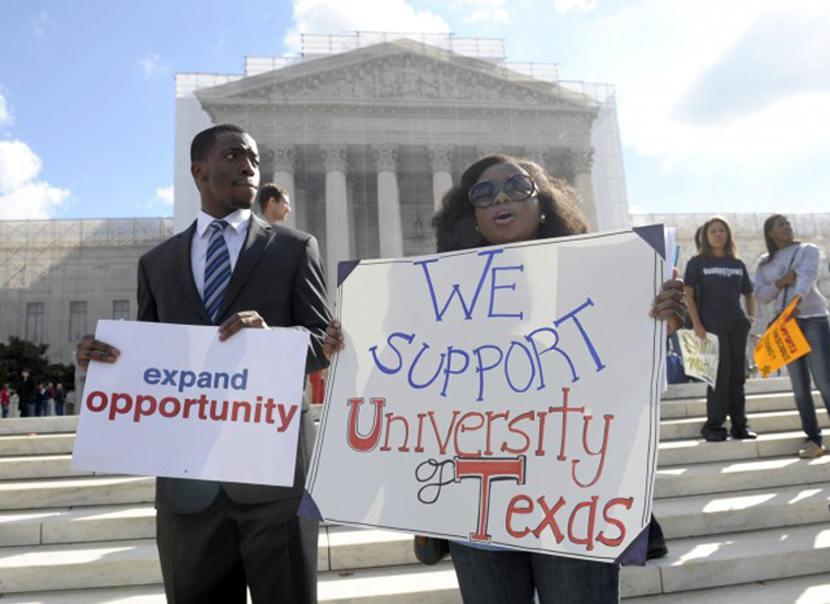
Jheanelle Wilkins of New Castle, Del., right, and Neo Moneri of Beltsville, Md., participate in a rally outside the Supreme Court in Washington, Wednesday, Oct. 10, 2012, supporting the University of Texas as it defends its affirmative action in admissions policy. | AP Photo/Susan WalshT To comprehend what is missed by recruiting residents of poor neighborhoods while ignoring the middle class, consider the University of Texas’s “Ten Percent Plan,” Cashin’s favored place-based program. In 1996, after a federal appeals court banned the consideration of race in admissions, the university replaced affirmative action with an ingenious scheme that exploited pervasive racial segregation of Texas high schools. Admission was offered to the tenth of each school’s graduating class with the best grades. Because so many Texas African Americans attend predominantly black schools (in predominantly low-income neighborhoods), the plan generated a 2003 freshman class that was 4.5 percent black.
The following year, however, the Supreme Court permitted including race in a more holistic evaluation of applicants, to create diversity. Texas preserved its Ten Percent Plan but supplemented it with race-conscious affirmative action that enrolled additional black applicants. In 2013, 3.4 percent of entering students were African-American Ten Percenters, while an additional 1.2 percent were African Americans admitted for diversity purposes. The diversity admittees were more likely to hail from middle-class families and less likely to hail from extremely low-income families than the Ten Percenters. When the university was challenged in the Supreme Court, its lawyers acknowledged that one goal of the diversity plan was to recruit more middle-class blacks.
Justice Samuel Alito was contemptuous: “I thought the whole purpose of affirmative action was to help students who come from underprivileged backgrounds,” Alito chided the university’s lawyers, “[but now you say] it’s faulty because it doesn’t admit enough … who come from privileged backgrounds.”
Yet if middle-class blacks need no affirmative action, why are their numbers still uncomfortably low?
Cashin sides with Alito. She calls preferences for middle-class blacks “unseemly.” Yet if middle-class blacks need no affirmative action, why are their numbers still uncomfortably low? While more than 8 percent of all Texas families are African American with incomes above the Texas median, only 1.2 percent of entering students were African Americans admitted for diversity purposes. Is this because middle-class blacks are unqualified for selective institutions like the University of Texas?
Perhaps Cashin downplays affirmative action for blacks who are neither affluent nor trapped in high-poverty neighborhoods because she has been distracted by the attention we now pay to the struggling middle class in this age of growing inequality. It is certainly the case that middle-class incomes have not grown as they should with rising productivity. Many working families have been forced to downsize their housing in the post-bubble recession, and many middle-class workers have taken lower-paying jobs as the workforce has deindustrialized. Yet not all but the super-rich have become poor. The median family income remains about $55,000, and 60 percent of families earn between about $30,000 and $120,000 annually. Contrasting only the affluent with those in poor neighborhoods ignores most American families.
Even for low-income families, other groups’ disadvantages—though serious—are not similar to those faced by African Americans. Although the number of high-poverty white communities is growing (many are rural; solicitude for these prompted Texas Republicans to support the Ten Percent Plan), poor whites are less likely to live in high-poverty neighborhoods than poor blacks. Nationwide, 7 percent of poor whites live in high-poverty neighborhoods, while 23 percent of poor blacks do so. Patrick Sharkey’s Stuck in Place showed that multigenerational concentrated poverty remains an almost uniquely black phenomenon; white children in poor neighborhoods are likely to live in middle-class neighborhoods as adults, whereas black children in poor neighborhoods are likely to remain in such surroundings as adults. In other words, poor whites are more likely to be temporarily poor, while poor blacks are more likely to be permanently so.
The “place-based” preferences Cashin supports will therefore recruit low-income African Americans and some immigrant or even second-generation Hispanics but few other low-income students. They will also recruit some middle-class African Americans, who are more likely to live in disadvantaged neighborhoods than nonblack middle-class families. In this sense, by primarily benefiting African Americans, they are indeed the kind of policy-by-disguise that Ginsburg denounced.
But most middle-class African Americans no longer live in predominantly black neighborhoods.
But most middle-class African Americans no longer live in predominantly black neighborhoods. They will not benefit from place-based plans that Cashin supports—and they will be underrepresented without race-conscious affirmative action. That is because African American families with middle-class incomes are quite different from white families with similar incomes. Colorblind policies giving a boost to low-income students falsely assume that family income differences can distinguish social class. They cannot.
Median black family income was 61 percent of the white median in 2010. Yet black median family wealth (net worth, or assets minus debts) was an astonishingly low 5 percent of the white median. I recently asked Thomas Shapiro, co-author of Black Wealth/White Wealth (1995), to estimate relative wealth by race for middle-class families. Calculating relative wealth for black and white families with annual incomes of $60,000—slightly above the national median—from his most recent data in 2007, he found that black middle-class wealth was only 22 percent of whites’. This gap has undoubtedly widened since 2007 because the housing collapse harmed blacks—who were targeted disproportionately for exploitative subprime loans and exposed to foreclosure—more than whites.
In short, middle-class African Americans and whites are in different financial straits. Total family wealth (including the ability to borrow from home equity) has more impact than income on high-school graduates’ ability to afford college. Wealth also influences children’s early expectations that they will attend and complete college. White middle-class children are more likely to prepare for, apply to, and graduate from college than black children with similar family incomes. Sheryll Cashin’s six-year-olds may know they will attend elite schools. Typical middle-class African-American children do not.
Cashin agrees that admissions officers should take a special look at applicants (of all races) whose families have low wealth but makes clear she considers this of lesser importance than residence in a high-poverty neighborhood. Nor does she explain how low wealth should be to entitle an applicant who does not live in such a neighborhood to consideration. Although typical middle-class black families have far less wealth than typical middle-class white families, they are not always without wealth at all.
When colorblind affirmative-action proponents seek first-generation college applicants in high-poverty neighborhoods, they risk skipping over this important pool of middle-class African Americans.
Black middle-class children are more likely to be first in their families to aim for college—again, more Michelle Obama than Sheryll Cashin. When colorblind affirmative-action proponents seek first-generation college applicants in high-poverty neighborhoods, they risk skipping over this important pool of middle-class African Americans. Moreover, while most middle-class African Americans now live in non–majority black neighborhoods, they are more likely to live adjacent to low-income neighborhoods. In new research, Patrick Sharkey finds that 32 percent of middle- and upper-income black families live in neighborhoods bordering severely disadvantaged neighborhoods, while only 6 percent of income-similar white families do so. The undertow that Cashin appropriately fears for low-income African Americans—the lure of drugs, gangs, oppositional behavior—pulls as well on middle-class black youth living nearby. Those who successfully resist may have strength of character surpassing that of white youth from families with similar incomes whose adolescence was better protected.
One wonders, too, if the attraction for many liberals of extending colorblind preferences to disadvantaged youth of all races and ethnicities is due, in part, to a misunderstanding of demographic trends. With enormous immigration flows to the U.S. in recent decades—particularly from Mexico and Central America—many jump too quickly to conclude that a growing share of Americans will be so socioeconomically disadvantaged that the nation will not be able to fulfill its needs for educated labor by relying primarily on middle-class students.Cashin’s book enacts this fallacy. From a prediction that the United States will soon become “majority-minority,” she asserts that future college-educated leaders must increasingly be drawn from low-income communities.
The majority-minority forecast typically adds projected numbers of African Americans, Hispanics, Asians, Native Americans, and a few others, finding that soon these will make up a majority of American schoolchildren and thereafter of the nation’s citizens. Yet what defines “minority”? Early in the 20th century, Italians, Poles, Greeks, Jews, and others were deemed nonwhite. By the third generation, these groups had assimilated and joined the “white” majority. The “majority–minority” claim assumes that few new immigrants will follow suit.
Do you want to see news done right? In an age where cat memes are considered “news,” The American Prospect is dedicated to providing deep, well-reported coverage of vital issues and stories like this. Please sign up and we’ll send you more like this one.
Although we can’t be certain what will occur, some data belie this assumption. For example, Latino immigrants who had resided in California for at least 30 years had a 65 percent homeownership rate prior to the burst of the housing bubble. That rate is undoubtedly lower after the bubble burst, but it is still an extraordinary illustration of Latinos’ assimilation to the middle-class majority.
Like many earlier European immigrant groups, new immigrants are also assimilating in later generations by intermarriage. In 2010, 26 percent of all Hispanic newlyweds married non-Hispanics; for those born here, the rate was 36 percent and for the third generation, the rate rises still higher. Calling offspring of such unions “minorities” is misleading. Over time, nativists may see assimilated Hispanics as part of the “white” majority, as they came to accept swarthy Italians, Poles, Greeks, and Jews. We will be a majority-majority country for some time to come.
Certainly, Hispanics suffer discrimination, some of it severe—police harassment of black and brown adolescents, accompanied by high incarceration rates, and the nativist-driven rollback of bilingual education programs come to mind—but the undeniable hardship faced by recent, non–English speaking, unskilled, low-wage immigrants is not equivalent to blacks’ centuries of lower-caste status. The problems are different, and the remedies must also be different, including in some, but not all cases, affirmative action. It is also appropriate for universities seeking diversity to make special efforts to recruit and accept Hispanic students, but these efforts should not be confused with the proper constitutional requirement that universities extend preferences to African Americans to repair centuries of state-sponsored exploitation.
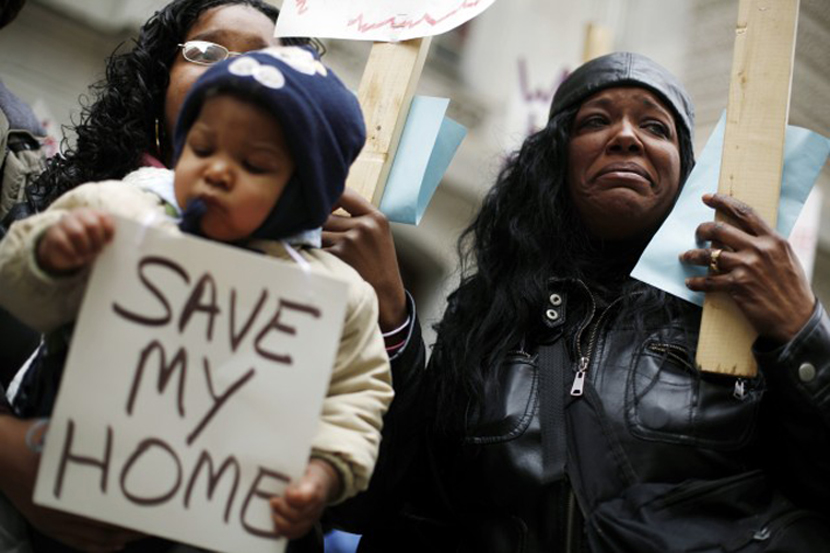
Elva Daniels, right, who is facing foreclosure, protests with her daughter Taiasha Rowland and grandson Cristopher Baker,14 months, Thursday, March 24, 2011, outside City Hall in Philadelphia. | AP Photo/Matt Rourke We cannot reasonably aspire to a meritocracy where all children—poor, middle-class, and affluent—have equal chances of landing in adulthood at every point in the social-class distribution. Higher social-class status will always confer advantages on children; we can only hope to mitigate them. A more realistic aspiration would be to assist children of African Americans who have climbed a few steps up the ladder in climbing a bit further, and in so doing providing leadership to the black community as a whole.
Affirmative action’s defense requires showing how these disparities result from clear constitutional violations
Yet knowing merely that middle-class African Americans have accumulated less wealth, live in less-advantaged neighborhoods, or more recently joined the middle class does not itself justify granting them preferences. Many opponents of affirmative action believe these disparities are either blacks’ fault or the result of ill-defined, unfortunate historical experiences for which blame can no longer be assigned. Affirmative action’s defense requires showing how these disparities result from clear constitutional violations—what Justice Ginsburg calls an “overtly discriminatory past, the legacy of centuries of law-sanctioned inequality” (emphasis added). The defense also requires showing that these violations’ effects have not so dissipated over time that a victim class is no longer identifiable or a remedy practical. An 1883 Supreme Court opinion pontificated that “when a man has emerged from slavery … there must be some stage in the progress of his elevation when he takes the rank of a mere citizen and ceases to be the special favorite of the laws.” Two decades after emancipation, the Court’s view that the stage had already arrived was ridiculously premature. Is it still?
It is a question neither Cashin nor Kennedy addresses: Why are there too few middle-class African Americans in selective universities, and what is the moral, legal, and historical justification for putting a thumb on the scale to compensate? Are direct effects of past discrimination still so pervasive that the 14th Amendment requires affirmative action?
Answers cannot duck the need to review the history of slavery, Jim Crow, and state-sponsored exploitation of African Americans, and how effects of these policies persist. Consider the example of most relevance to middle-class African-American enrollment in selective universities—the family wealth disparities by race described above. Discussions of affirmative action are empty without the background of how these wealth disparities arose.
Black families, prohibited by federal policy from buying into these initially low-priced suburbs, lost out.
In the last century, federal agencies subsidized white suburban development by guaranteeing loans to mass-production builders who created places like Levittown on Long Island, Lakewood in California, and similar uncounted suburbs in metropolitan areas nationwide. Homes were inexpensive and theoretically affordable to black and white workers alike, especially to returning World War II veterans. But the Federal Housing and Veterans administrations encouraged and usually required these builders to refuse sales to African Americans. Whites who were permitted to buy benefited from ensuing decades of equity appreciation; this wealth helped finance college for their children and was later bequeathed to them. Black families, prohibited by federal policy from buying into these initially low-priced suburbs, lost out.

Gottscho-Schleisner, Inc./Library of Congress | The affordable homes of the Levittowns built across the nation, like this one on Long Island, New York, were not available to black families.
Levittown is a nationally representative example. The federal government guaranteed construction loans for Levitt & Sons with a whites-only proviso. William Levitt sold his houses to whites beginning in 1947 for $7,000, about two-and-a-half times the national median family income. White veterans could get V.A. or FHA loans with no down payments. Today, these homes typically sell for $400,000, about seven times the median income, and mortgages typically require down payments of up to 20 percent. Although African Americans are now permitted to purchase in Levittown, it’s become unaffordable. By 2010 Levittown, in a metropolitan region with a large black population, was still less than 1 percent black. White Levittowners can today easily save for college. Blacks denied access to the community are much less likely to be able to do so.
Government policy also impeded African Americans’ ability to accumulate wealth from saved income. As documented last year in Ira Katznelson’s Fear Itself, the New Deal, from undisguised racism and compromise with Southern Democrats, prevented African Americans from realizing the benefits of labor-market reforms like the minimum wage, Social Security, and the National Labor Relations Act by excluding occupations (such as agriculture and domestic service) in which African Americans predominated. The government certified unions for exclusive bargaining even when unions barred African Americans from membership or restricted them to the lowest-paid jobs. These policies further contributed to differences in white and black workers’ wealth accumulation, and their ability to share that wealth with their college-going heirs.K
Kennedy, a professor at Harvard Law School, also clerked for Thurgood Marshall at the Supreme Court—like Cashin. Kennedy’s For Discrimination does little to explain why the playing field needs leveling— it assumes familiarity with the enduring effects of centuries of discrimination—but does a superb job of defending affirmative action against its commonplace criticisms, while acknowledging that the criticisms are not wholly without foundation. Kennedy is, for example, ambivalent about “diversity” alternatives. He likes that they cause colleges to embrace black students; for the first time, he writes, being black is “seen as a valuable credential.” He acknowledges that diverse classrooms improve learning but also embraces the complaint of Professor Lino Graglia that diversity is “little more than an invitation to fraud by nearly all colleges and universities” that are prohibited from employing race-conscious methods to increase African-American enrollments. Kennedy shares Professor Sanford Levinson’s worries about “costs to intellectual honesty of the felt need to shoehorn one’s arguments [for racial justice] into the language of ‘diversity.’”Coates calls for consideration of “reparations” as a remedy; affirmative action is a perfectly reasonable expression of such a remedy
The book’s flaw is its assumption that contemporary readers understand the unfortunate effects of centuries of racial discrimination. For most Americans who deny that these effects remain powerful, Kennedy’s arguments will be unpersuasive. Fortunately, other prominent voices are, for the first time in a long time, making the historical case. Sotomayor is one. Another is reporter Nikole Hannah-Jones, who has published a series over the past two years at the independent investigative journalism site ProPublica, focusing on official responsibility for ongoing residential segregation in New York’s Westchester County. Yet another is Atlantic writer Ta-Nehisi Coates, whose widely heralded recent article (and accompanying video) demonstrated how federally sponsored housing discrimination in the North Lawndale neighborhood of Chicago in the 1960s limited all sorts of opportunities for African Americans, their children, and their grandchildren. Coates calls for consideration of “reparations” as a remedy; affirmative action is a perfectly reasonable expression of such a remedy, and Kennedy’s For Discrimination well explains why it is so reasonable.
We cannot calculate specific debts owed to African Americans (in almost all cases, now impossible to identify) whose government denied them the opportunity, in violation of constitutional rights, to purchase suburban homes and then benefit from equity appreciation. But in principle, we can calculate some consequences of our racial history. Kennedy quotes Martin Luther King Jr.’s assertion that unpaid wages due slaves, had they been free plantation laborers, are calculable. Wage losses stemming from exclusion of identifiable African Americans from federal minimum wage or collective-bargaining protection might also be determined. But repayment to these workers (or their heirs) of such losses is politically if not practically inconceivable. In this context, extending small college-admission preferences to otherwise qualified descendants of slaves and those subject to Jim Crow laws is a modest step.
The most prominent academic challenge to affirmative action nowadays comes from Richard Sander, a University of California, Los Angeles, professor who claims that when affirmative-action beneficiaries are admitted to law schools for which they were not qualified by test scores and grade point averages, they can’t keep up academically, and that fewer pass bar exams than if they had attended lower-ranked schools to which they would have been admitted without preferences. Sander concludes that affirmative action perversely reduces the supply of black lawyers.
It’s an old argument, recalling century-old debates between followers of Booker T. Washington and of W.E.B. DuBois.
Although the claim has been unpersuasive to most social scientists, Kennedy is willing to concede Sander’s point for argument’s sake but says, so what? Assume there would be more black lawyers overall if more attended lower-ranked schools and fewer were plucked by elite institutions. Which are more needed—a greater number of black lawyers doing wills, divorces, and criminal defense or, even with a lesser total of black lawyers, more judges, corporate executives, and cabinet members who can lead and inspire others to follow? It’s an old argument, recalling century-old debates between followers of Booker T. Washington and of W.E.B. DuBois. The former urged African Americans to prove themselves to whites by competence in lower-middle-class trades where they were unthreatening. The latter called for nurturing the “talented tenth” to advance the black community’s fight for liberation. Randall Kennedy unequivocally sits in DuBois’s camp.
It’s refreshing that Kennedy confronts not only ostrich-like pronouncements that affirmative action isn’t really about race but also the facile assurances of some proponents that affirmative action has only benefits, no costs. Actually, costs are borne both by beneficiaries and others. Do successful African Americans, even those who would have gained admission solely by regular criteria, feel stigmatized because whites suspect they owe their positions to special preferences and are unqualified for positions they hold? Kennedy acknowledges they do and acknowledges that he suffers himself from such stigma. Is putting up with a bit of stigma a small price for opportunities opened to African Americans with nonstandard qualifications to lead? Yes, he concludes.
As for costs to others, Kennedy ridicules Barack Obama’s claim in The Audacity of Hope that affirmative action “can open up opportunities otherwise closed to qualified minorities without diminishing opportunities for white students.” Kennedy retorts, “How can that be?” If college places are limited and affirmative action admits a handful of African Americans who wouldn’t otherwise attend, an equal number of non-favored applicants must be rejected. However small that number might be relative to the thousands of qualified applicants denied admission because of space limitations, arguments for affirmative action should acknowledge this cost.
Kennedy notes that affirmative action’s opponents assert that many, if not most, beneficiaries have not themselves suffered discrimination. This is less true than most people think, because inherited wealth plays a large role in financing college.
Kennedy notes that affirmative action’s opponents assert that many, if not most, beneficiaries have not themselves suffered discrimination. This is less true than most people think, because inherited wealth plays a large role in financing college. But as elsewhere, Kennedy acknowledges complexity. Some beneficiaries of affirmative action may not “deserve” it. But why, he asks (citing Professor Kwame Anthony Appiah), are we so much more worried that we might overcompensate than undercompensate victims?
Then there is Kennedy’s defense, which is so obvious it barely merits mention—except it remains obvious to too few. Non-merit-based preferences are pervasive in American life. At universities, they include football and violin players, alumni children, and students from regions producing few applicants. Affirmative-action opponents effectively claim that the 14th Amendment permits deviation from academic merit for all discriminatory preferences—except race.
Just as there are small costs to whites for race-based affirmative action, there are small costs to Massachusetts students when Harvard seeks out farmers’ sons from Idaho. Applicants in non-favored categories can dispute the wisdom of preferences, whether for race or other characteristics, but cannot claim they suffered unfair discrimination if institutions are transparent about their missions and how particular student characteristics advance them. As Kennedy wryly observes, nobody seems worried about the stigma attached to Idaho students by those who suspect they didn’t really “deserve” to be admitted.
It’s apparent that I am tempted to judge Kennedy’s the more persuasive book, despite its failure to explain the justice of the affirmative action he defends. But I should not dismiss Cashin’s work too easily. She could be right that affirmative action is so politically toxic that defending it helps perpetuate white resistance to racial progress. If so, and if we seek policy to advance African Americans’ interests indirectly or deceptively, she makes strong arguments. For example, she describes successful efforts (Amherst College’s is the most notable) to recruit hidden talent in low-income communities and to transform these colleges’ cultures and financial structures to make more economically diverse student bodies work. Cashin’s book is worth reading for this presentation alone.If we grant Cashin’s premise that race-based affirmative action is politically inconceivable, now and forever, the alternative to granting preferences only to low-income students may be no racial diversity at all at selective institutions. Given that choice, her proposals are wise, even if they ignore middle-class African Americans for whom preferences really should be designed.
But perhaps we should not reflexively grant the premise. “Things change,” Kennedy reminds us. “The composition of the Supreme Court evolves.” Certainly the Court now leads the country rightward on matters of racial justice, but the tide has turned so many times that not inconceivably it may again. Although voters in Michigan, California, and other states have adopted constitutional amendments prohibiting race-based affirmative action, opinion polls continue to find a majority, even of whites, supporting it. When policy dissembles, it invites perverse results. One is that liberals make a change in the Court less likely if they accommodate too easily to its present prejudices and provide no leadership for a different future.
In her award-winning novel Americanah, Chimamanda Ngozi Adichie assumes the role of a Nigerian blogger telling American blacks what their white friends should have a responsibility to say:Many whites with the same qualifications but Negro skin would not have the jobs they have. But don’t ever say this publicly. Let your white friend say it. If you make the mistake of saying this, you will be accused of a curiosity called “playing the race card.” Nobody quite knows what this means. … If the “slavery was so long ago” thing comes up, have your white friend say that lots of white folks are still inheriting money that their families made a hundred years ago. So if that legacy lives, why not the legacy of slavery?
It is remarkable, indeed depressing, that Justice Ginsburg is the only prominent white leader still making a consistent case for race-conscious policy. This vacuum may be what propels Sheryll Cashin to seek a colorblind, second-best alternative, foreseeing, as she puts it, the “inevitable demise of race-based affirmative action” because opposition to it is “widely held and not going away,” while its advocates “stymie possibilities for transformative change.” It should not fall upon Randall Kennedy, Sonia Sotomayor, or Ta-Nehisi Coates to be our most vocal advocates of remedies for racial injustice. Only if white policymakers, not Ginsburg alone, step up will Cashin’s predictions be unfulfilled.
Richard Rothstein is a Prospect contributing editor, a research associate at the Economic Policy Institute, and senior fellow at the Chief Justice Earl Warren Institute on Law and Social Policy at U.C. Berkeley School of Law.
ARTICLES BY RICHARD ROTHSTEIN | RSS FEED OF ARTICLES BY RICHARD ROTHSTEIN
This article is from the July/August issue of The American Prospect magazine.

